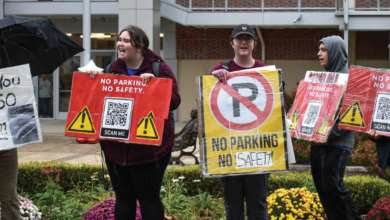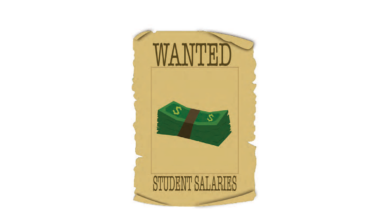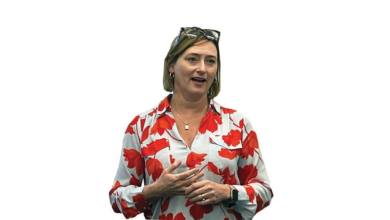
Bond status downgrade creates financial uncertainty for Rider
By Sarah Siock
After a challenging year that resulted in an approximate $9.5 million deficit for the university, Rider continues to head down a path of financial uncertainty with analysts at the Moody’s Investors Service once again downgrading Rider’s bond rating and giving the university a “negative” outlook.
In July, the bond credit rating business moved Rider’s rating from Ba1 to Ba2 citing the university’s “continued very weak operating performance, reliance on a line of credit and recent increase in leverage, largely for working capital needs.”
A downward trend
The new bond rating marks the university’s third downgrade in four years. In 2017, Moody’s Investors Service revised Rider’s outlook from stable to negative. In 2020, Moody’s downgraded the university’s revenue bonds to “junk” status, meaning that the school’s bonds carried a higher chance of default, and if the university borrowed more money in the future, it was likely to pay higher interest rates. The newest downgrade is an even lower version of junk bond status and could make it more difficult and expensive for Rider to borrow money.
The report from Moody’s states that the rationale behind the rating downgrade includes enrollment declines, lagging growth in net tuition per student and an 8% decrease in net tuition revenue over the fiscal 2016-20 period.
“While the university has articulated strategies to improve operations, a turnaround, if achievable, will take multiple years,” the July 13 report states.
While the new bond status may make it difficult for Rider to borrow money, the university has no plans to do so according to Vice President of Finance James Hartman.
Impact of COVID-19
However, a near-future improvement in Rider’s bond rating may be difficult as the pandemic continues to bring financial hardship to the university and negatively impact enrollment.
“It’s widely known that the landscape of higher education is changing rapidly. The global pandemic has only exacerbated the existing challenges institutions like Rider have been facing, while also creating unforeseen new ones,” said Hartman in an email to The Rider News.
Hartman said the university lost approximately $27 million in room, board and auxiliary revenue over the past two fiscal years due to the pandemic and spent approximately $2 million in COVID-19 related costs last year to ensure the safety of faculty, staff and students.
At the fall convocation, Rider President Gregory Dell’Omo said Rider’s undergraduate returning student rate dropped to 76.8% this past year, a steep drop from 80.3% the year before. Dell’Omo said Rider’s total enrollment is at 3,827 students, which achieves the budget that Rider has, but is a drop from the 4,218 students the previous year.
Longtime financial struggles
Political science professor and President of Rider’s Chapter of the American Association of University Professors Barbara Franz said that effects of the COVID- 19 pandemic were not the only reason for Rider’s rating downgrade, and said it is a “direct result of years of mismanagement” by the current administration. She noted Rider’s failed attempt to sell Westminster Choir College (WCC).
“This is the second time within roughly a year that Rider’s bonds were downgraded, and the third time under the leadership of President Dell’Omo. For a long time prior to the three downgrades in July 2021, June 2020 and November 2017, Rider had a stable bond rating… Many universities in the tri-state area also have experienced these downturns in the past two semesters without equivalent downgrading of their creditworthiness,” said Franz. “…The combined impact of these and other poor decisions has led, for the first time, to negative cash flow and the need to fund some operations from debt. Given all of this, it is not surprising that Moody’s has downgraded Rider’s creditworthiness.”
The report also pointed to Rider’s attempt to sell WCC and ongoing litigation surrounding it as an obstacle in improving the university’s overall financial performance.
Looking ahead
Moody’s report details factors that could lead to a rating upgrade in the future if Rider increases enrollment, grows “net tuition” and improves its operating margins. However, the university is projected to operate at an almost $22 million deficit for the 2022 fiscal year, Dell’Omo said during his Sept. 2 convocation address.
Hartman said, “Rider has established an action plan focused on enrollment growth and long-term financial stability and did so long before the pandemic arrived. We’ve taken aggressive steps over the past five years to deal with issues related to affordability, competition, program offerings, shrinking state and federal funding, student success, retention, campus facilities and infrastructure and enrollment challenges.”
Hartman pointed to two new programs Rider launched last year, Lifting Barriers and Cranberry Investment, that aim to increase enrollment. The Lifting Barriers initiative is intended to help students and families break through significant obstacles they face in obtaining a college education and a successful career; it also lowered the tuition sticker price for Rider by 22%. The Cranberry Investment guarantees undergraduate students who fulfill their responsibilities will get a job or academic opportunities within six months of graduation.
“We are continuing to take bold steps to stabilize the finances of our university. The need to grow enrollment is critical, and every single person at this institution should be engaged in helping to increase our undergraduate and graduate populations,” said Hartman. “We are confident in Rider’s unique strengths and the steps we have taken to remain financially stable while continuing to support students on their journey of achieving their personal and professional goals.”


